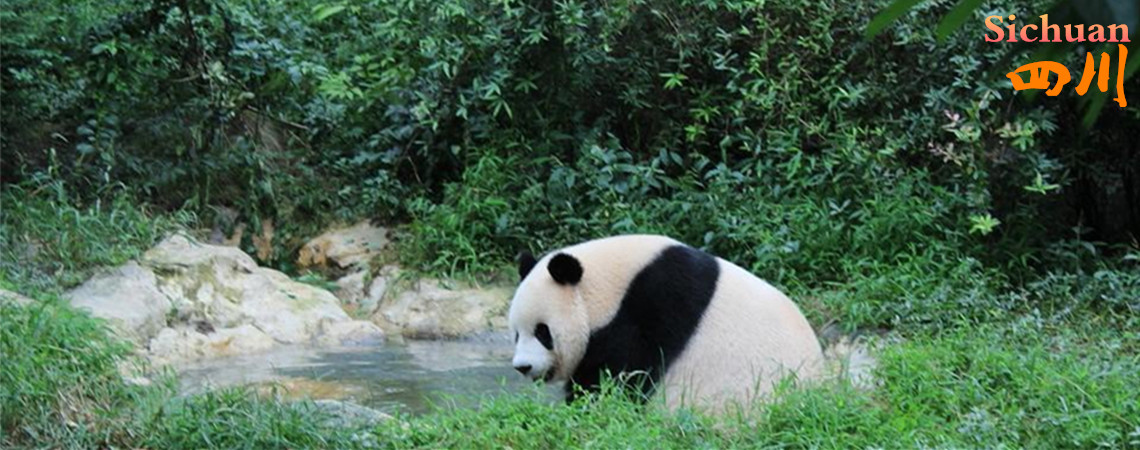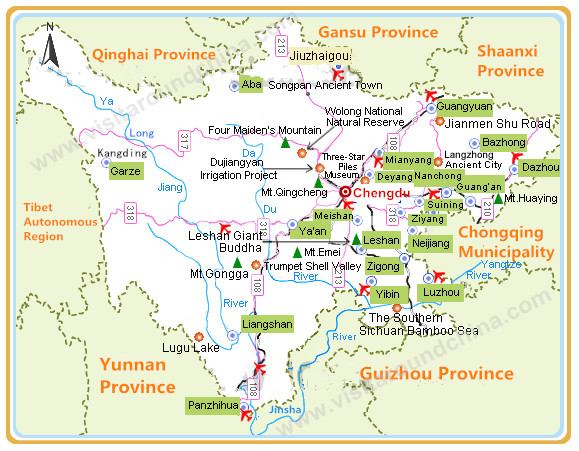Skype: neodalle-travel
Tel: +86 135 7447 2266
E-mail: sales@visitaroundchina.com

 Aba (Ngawa) Tibetan and Qiang Autonomous Prefecture is situated in northwestern Sichuan Province, the eastern end of the Qinghai-Tibet Plateau. It neighbors Qinhai and Gansu provinces in the north. Aba is famous for Jiuzhaigou and Huanglong Scenic Area.
Aba (Ngawa) Tibetan and Qiang Autonomous Prefecture is situated in northwestern Sichuan Province, the eastern end of the Qinghai-Tibet Plateau. It neighbors Qinhai and Gansu provinces in the north. Aba is famous for Jiuzhaigou and Huanglong Scenic Area.
Facts of Aba Prefecture
Name: Aba Tibetan & Qiang Minorities Autonomous Prefecture
Chinese Name: 阿坝藏族羌族自治州 (ā bà zàng zú qiāng zú zì zhì zhōu)
Population: 851,000
Area: 84,242 square kilometers (32,526 square miles)
Nationalities: Tibetan, Qiang, Han
Administrative Division: 13 counties (Barkam, Wenchuan, Lixian, Maoxian, Songpan, Jiuzhaigou, Jinchuan, Xiaojin, Heishui, Zamtang, Aba, Zoige, Hongyuan)
History of Aba
For thousands of years, a multitude of Chinese ancient ethnic minorities, including Qiang, Sienpi (Xianbei), Tubo and Hui, had worked collaboratively on the development of Aba, leaving the land abundant culture accumulations of ethnic minorities. The prefecture was changed into Aba Tibetan Autonomous Prefecture in 1955 and Aba Tibetan and Qiang Autonomous Prefecture in 1987.
What to see?
Wenchuan Special Tourism Zone: On May 12, 2008, a most damaging earthquake occurred in Wenchuan county. It was the 21st deadliest earthquake of all time and caused great loss of lives and property. The Chinese government did the best to help people to overcome the difficulties. Many foreign nations, international and domestic organizations as well as common people also offered quick assistance to the victims. After the earthquake, Wenchuan Special Tourism Zone was established to commemorate the victims of the earthquake, create more employment opportunities for the survivors and make more people learn of the culture of the Qiang and Tibetan ethnic minorities.
How to get to Aba?
Jiuhuang (Jiuzhaigou-Huanglong) Airport is 12 kilometers (7 miles) north of the Chuanzhusi Town, Songpan County. The airport is 88 kilometers (55 miles) from Jiuzhaigou Scenic Area, and 43 kilometers (27 miles) from Huanglong. Air distance from Jiuhuang Airport to Chengdu Shuangliu International Airport is about 240 kilometers (149 miles) for about 40 minutes' ride. There are dozens of flights daily from Jiuzhaigou to Chengdu, but much fewer in winter.
Remark:
1. If visitors don't want to miss the natural beauty on the way, the best way is taking buses. Chengdu has two bus stations operating lines to Jiuzhaigou, Barkam, Zoige, Songpan, Zamtang and the Four Maiden's Mountain.
2. Visiting Aba, including Jiuzhaigou and Huanglong, spring or autumn clothing is necessary in summer for the temperature varies greatly during a day.
When to visit Aba?
Climate of the prefecture is complex and varied for the complicated geography and landform. The northwestern tableland area has a continental plateau climate with long and chilly winter and cool humid summer. The annual average temperature is 0.8-4.3![]() C (33 -40
C (33 -40![]() F). The Aba weather of the southeastern alpine valleys ranges from the temperate to the frigid climatic types with annual average temperature of 1-5
F). The Aba weather of the southeastern alpine valleys ranges from the temperate to the frigid climatic types with annual average temperature of 1-5![]() C (34-41
C (34-41![]() F).
F).
Some people say that paradise is distributed everywhere in Aba. The fact is that different sceneries here show their best in different seasons although visitors can visit this wonderland at any time. For instance, the best time to Huanglong is from April to November, to Jiuzhaigou is from September to October and to the Four Maiden's Mountain is in July and August.
Aba Travel Tips
Aba Highlights: Festivals and folk customs of the Tibetan and the Qiang constitute the highlights of the prefecture. In addition, the International Panda Festival will be held in every September.
Special Products: verbal medicine, Tibetan knives, embroidery of the Qiang ethnic minority.
 Ask Questions ?
Ask Questions ?